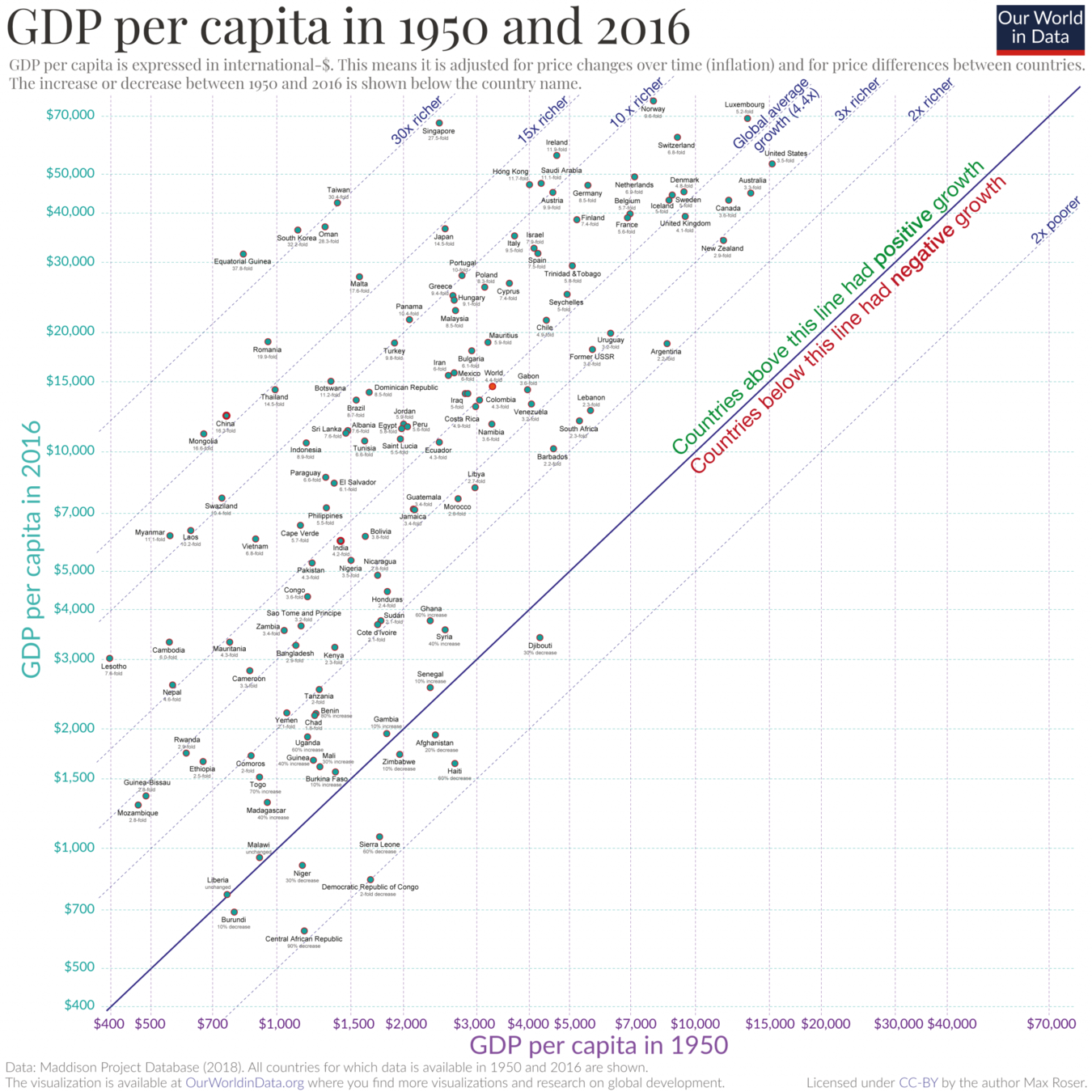ECOS 3997
Lecture 10
evidence
Locate the data for Siddhanath and Shyamnath (Rural India)
Also find one other family that interests you
Read the descriptions of the households
Locate the data for Siddhanath and Shyamnath (Rural India)
Also find one other family that interests you
Read the descriptions of the households
Discuss some factors that could improve the lives of these two families
Are there any aspects that are not adequately reflected in the HDI?
Outline an essay that argues in favor of augmenting the HDI with one new dimension
Polling:

http://etc.ch/GVhG
Macro
How can poor countries become rich countries?
Micro
How can poor people escape poverty and have prosperous lives?
What countries have achieved economic growth?
Does growth reduce poverty?

Source: https://ourworldindata.org/economic-growth
Macro
How can poor countries become rich countries?
Micro
How can poor people escape poverty and have prosperous lives?
What countries have achieved economic growth?
Does growth reduce poverty?
What makes countries grow?

Macro
How can poor countries become rich countries?
Micro
How can poor people escape poverty and have prosperous lives?
What countries have achieved economic growth?
Does growth reduce poverty?
What makes countries grow?
How do we implement good policies in the right way?
Poll 1: What can we learn from this graph about the relationship between economic growth and poverty?
Poll 1: What can we learn from this graph about the relationship between economic growth and poverty?

Poll 2: Which of these explanations for the education-poverty relationship do you find the most plausible?
Beware
of
correlations
Before vs. after
Compare people / communities before and after a program
Participant vs. Non-participant
Compare people who received a program to those who did not
False counterfactuals
Before vs. after
Compare people / communities before and after a program
Participant vs. Non-participant
Compare people who received a program to those who did not
False counterfactuals
Does not control for time trends
Selection
Before vs. after
Compare people / communities before and after a program
Participant vs. Non-participant
Compare people who received a program to those who did not
Can two wrongs make a right?
Does not control for time trends
Selection
(pre-post)
False counterfactuals
Can two wrongs make a right?
Difference-in-differences (diff-in-diff)
combines pre-post & participant-non-participant approaches
Sometimes this can allow us to overcome the dual issues of selection
(on fixed traits) & time trends in the outcome we care about
Cholera


Can two wrongs make a right?
Cholera


Can two wrongs make a right?
Cholera


| "Treated" Lambeth |
"Comparison" Southwark & Vauxhall |
|
| Pre |
0 | 0 |
| Post |
5 | 71 |
| "Treated" |
"Comparison" |
|
| Pre |
||
| Post |
Can two wrongs make a right?
Cholera

| "Treated" Lambeth |
"Comparison" Southwark & Vauxhall |
|
| Pre |
||
| Post |

If you want to know more about John Snow and the cholera outbreak, this short video is great!
Can two wrongs make a right?
Abhijit
Banerjee



Esther Duflo
Michael Kremer
The modern movement for RCTs in development economics… is about innovation, as well as evaluation.
It’s a dynamic process of learning about a context through painstaking on-the-ground work, trying out different approaches, collecting good data with good causal identification, finding out that results do not fit pre-conceived theoretical ideas, working on a better theoretical understanding that fits the facts on the ground, and developing new ideas and approaches based on theory and then testing the new approaches.
